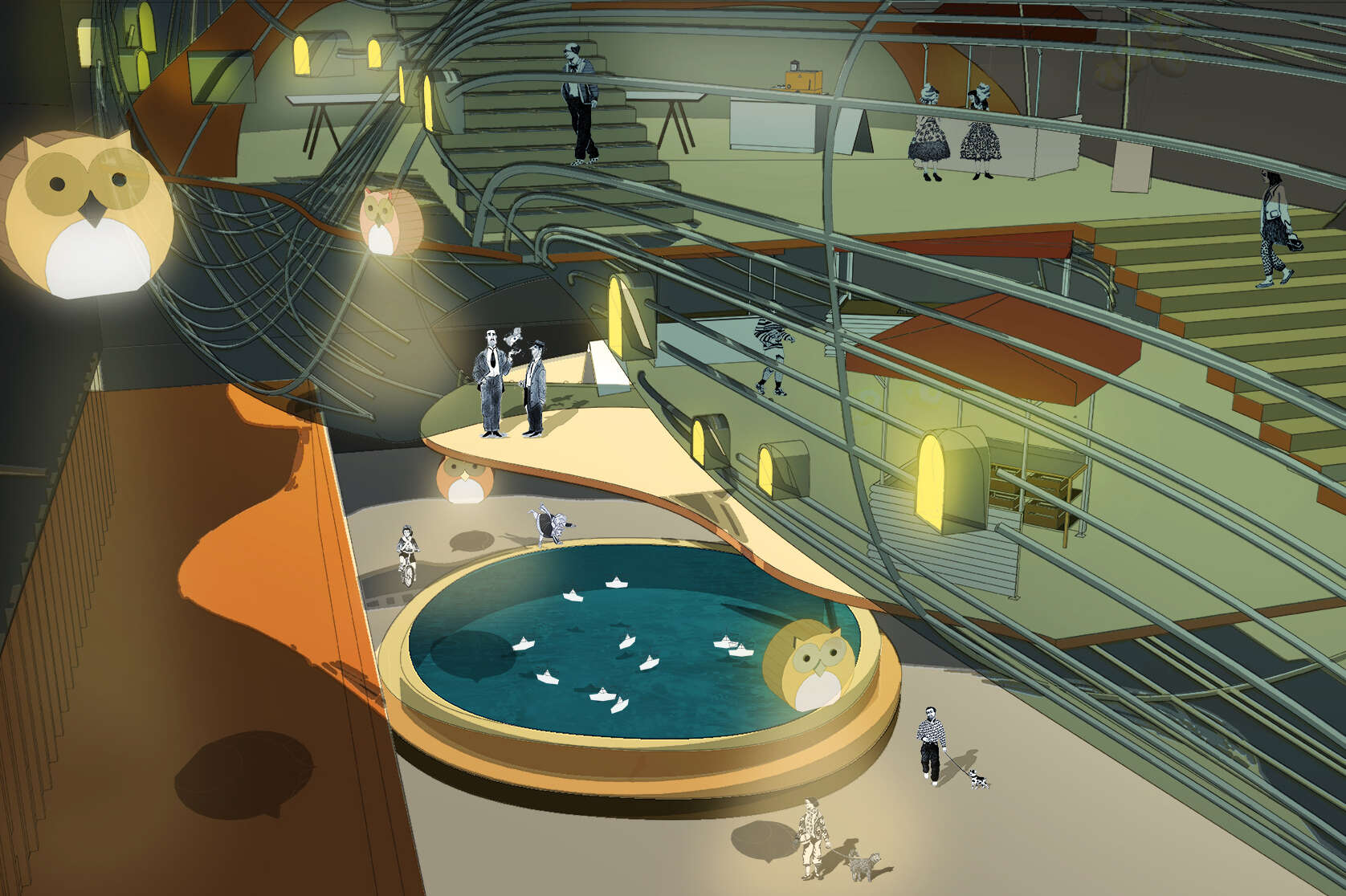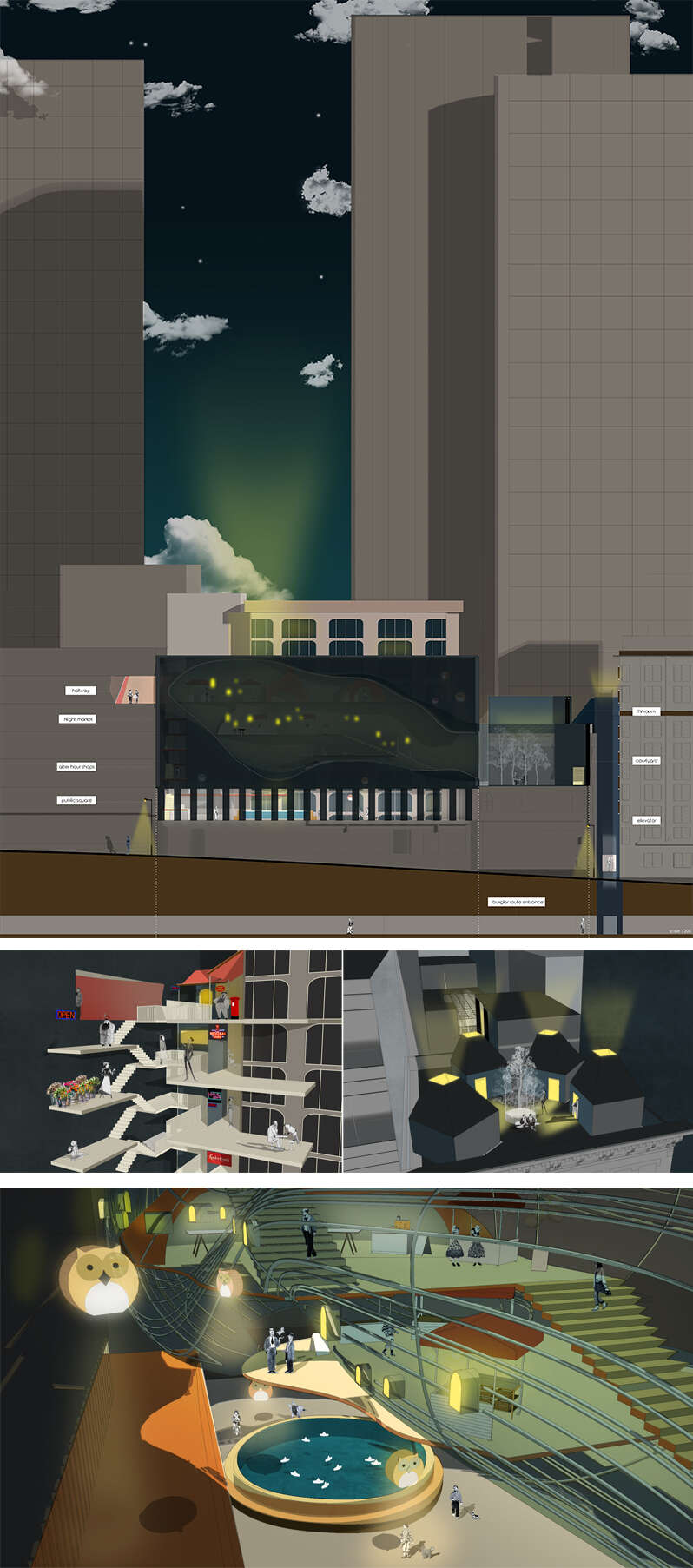In an era in which capital is the driver of the city, buildings are forced together as sets of parts in various relationships of convenience; chance and proximity1. The establishment of capitalism has empowered architecture into a prosaic routine of attending to conventionality, sterilizing fantasies and peculiarities of architectural spaces. Simultaneously, residual spaces in this orthodox environment emerge as indeterminate spaces foreign to the urban system. As an observation of this situation, this thesis devises a peculiar manner to allow architecture to infiltrate the residual spaces in Auckland City.
Using the left-over spaces of the city reveals new potentials in the existing order and introduces ways to reformulate architectural relationships within the city.2 These detached environments enable the architect to create his own strange spatial logic whilst making the city accessible, potentially evolving urbanism further. The architecture inhabiting the negative spaces becomes the transitional artifice to create healthy curiosity for strangeness; hence, it focuses on itself as a bizarre, magical, strange and curious device.





















